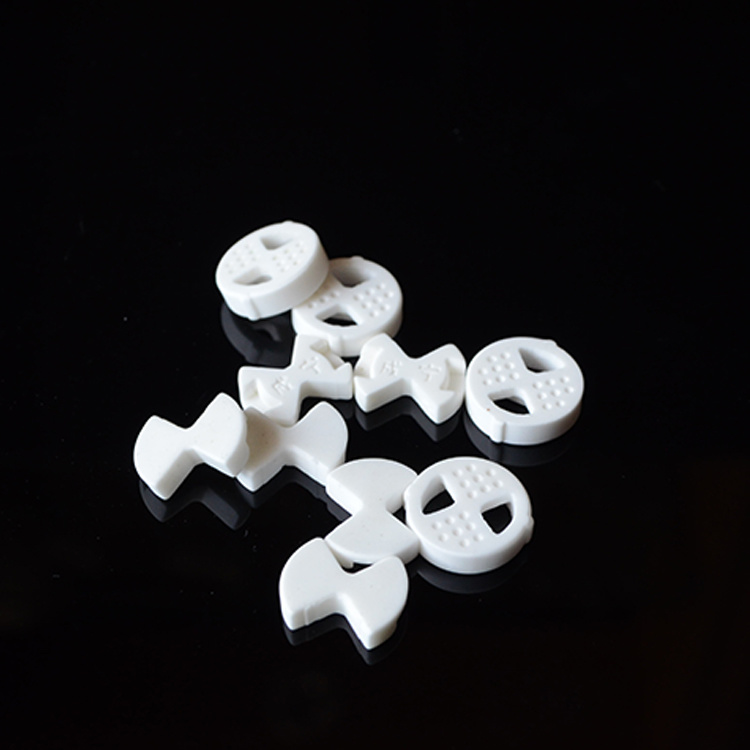
Optimizing Assay Processes: Laboratory Porcelain Fire Assay Crucibles Demystified
Time:
2024-06-05 09:40
Source:
**Introduction: The Importance of Assay Processes**
When it comes to analyzing materials for their composition and purity, assay processes play a crucial role in various industries, including mining, metallurgy, and ceramics. The accuracy and precision of these processes heavily rely on the quality of the equipment used, such as laboratory porcelain fire assay crucibles. In this article, we will delve into the intricacies of optimizing assay processes with these essential tools.
**Understanding Laboratory Porcelain Fire Assay Crucibles**
Laboratory porcelain fire assay crucibles are specially designed vessels used to contain samples during the high-temperature melting process. These crucibles are made from a combination of clay and other refractory materials, making them resistant to extreme heat and chemical reactions. Their smooth, non-porous surface ensures minimal contamination and accurate results during the assay process.
**Optimizing Assay Processes with Laboratory Porcelain Fire Assay Crucibles**
1. **Choosing the Right Crucible Size**: Selecting the correct crucible size is crucial for efficient sample handling and consistent results. Ensure that the crucible can accommodate the sample volume while allowing room for proper mixing and melting.
2. **Preparation and Preheating**: Before use, it is essential to properly prepare the crucible by cleaning and preheating it to eliminate any residual impurities. Preheating the crucible also helps prevent thermal shock during the melting process.
3. **Maintaining Temperature Control**: Consistent temperature control is vital for accurate assay results. Monitor the crucible temperature closely throughout the heating and cooling phases to prevent overheating or underheating, which can affect the sample's integrity.
4. **Optimizing Melting Conditions**: Adjusting the melting conditions, such as heating rate and dwell time, can impact the efficiency and accuracy of the assay process. Fine-tune these parameters based on the sample type and desired results to achieve optimal melting performance.
5. **Handling and Care**: Proper handling and care of laboratory porcelain fire assay crucibles are essential to prolong their lifespan and maintain their effectiveness. Avoid sudden temperature changes, thermal shocks, and physical damage that can compromise the crucible's integrity.
**Frequently Asked Questions**
1. **Can laboratory porcelain fire assay crucibles be reused?**
- Yes, these crucibles can be reused multiple times with proper care and maintenance.
2. **What is the maximum temperature resistance of laboratory porcelain fire assay crucibles?**
- Most crucibles can withstand temperatures up to 1600℃, making them suitable for high-temperature applications.
3. **How do I clean laboratory porcelain fire assay crucibles?**
- Use a mild detergent and a soft brush to clean the crucibles, followed by thorough rinsing with distilled water.
4. **Are there different types of laboratory porcelain fire assay crucibles available?**
- Yes, there are various sizes and shapes of crucibles designed for specific assay processes and sample volumes.
5. **How can I prevent contamination in laboratory porcelain fire assay crucibles?**
- Avoid using abrasive materials or harsh chemicals that can etch the crucible surface and introduce impurities into the samples.
**Conclusion**
Optimizing assay processes with laboratory porcelain fire assay crucibles requires attention to detail, proper maintenance, and adherence to best practices. By following the guidelines outlined in this article, you can enhance the efficiency and accuracy of your assay workflows, leading to more reliable and precise results. Invest in quality crucibles and prioritize their care to ensure consistent performance and optimal outcomes in your analytical processes.
When it comes to analyzing materials for their composition and purity, assay processes play a crucial role in various industries, including mining, metallurgy, and ceramics. The accuracy and precision of these processes heavily rely on the quality of the equipment used, such as laboratory porcelain fire assay crucibles. In this article, we will delve into the intricacies of optimizing assay processes with these essential tools.
**Understanding Laboratory Porcelain Fire Assay Crucibles**
Laboratory porcelain fire assay crucibles are specially designed vessels used to contain samples during the high-temperature melting process. These crucibles are made from a combination of clay and other refractory materials, making them resistant to extreme heat and chemical reactions. Their smooth, non-porous surface ensures minimal contamination and accurate results during the assay process.
**Optimizing Assay Processes with Laboratory Porcelain Fire Assay Crucibles**
1. **Choosing the Right Crucible Size**: Selecting the correct crucible size is crucial for efficient sample handling and consistent results. Ensure that the crucible can accommodate the sample volume while allowing room for proper mixing and melting.
2. **Preparation and Preheating**: Before use, it is essential to properly prepare the crucible by cleaning and preheating it to eliminate any residual impurities. Preheating the crucible also helps prevent thermal shock during the melting process.
3. **Maintaining Temperature Control**: Consistent temperature control is vital for accurate assay results. Monitor the crucible temperature closely throughout the heating and cooling phases to prevent overheating or underheating, which can affect the sample's integrity.
4. **Optimizing Melting Conditions**: Adjusting the melting conditions, such as heating rate and dwell time, can impact the efficiency and accuracy of the assay process. Fine-tune these parameters based on the sample type and desired results to achieve optimal melting performance.
5. **Handling and Care**: Proper handling and care of laboratory porcelain fire assay crucibles are essential to prolong their lifespan and maintain their effectiveness. Avoid sudden temperature changes, thermal shocks, and physical damage that can compromise the crucible's integrity.
**Frequently Asked Questions**
1. **Can laboratory porcelain fire assay crucibles be reused?**
- Yes, these crucibles can be reused multiple times with proper care and maintenance.
2. **What is the maximum temperature resistance of laboratory porcelain fire assay crucibles?**
- Most crucibles can withstand temperatures up to 1600℃, making them suitable for high-temperature applications.
3. **How do I clean laboratory porcelain fire assay crucibles?**
- Use a mild detergent and a soft brush to clean the crucibles, followed by thorough rinsing with distilled water.
4. **Are there different types of laboratory porcelain fire assay crucibles available?**
- Yes, there are various sizes and shapes of crucibles designed for specific assay processes and sample volumes.
5. **How can I prevent contamination in laboratory porcelain fire assay crucibles?**
- Avoid using abrasive materials or harsh chemicals that can etch the crucible surface and introduce impurities into the samples.
**Conclusion**
Optimizing assay processes with laboratory porcelain fire assay crucibles requires attention to detail, proper maintenance, and adherence to best practices. By following the guidelines outlined in this article, you can enhance the efficiency and accuracy of your assay workflows, leading to more reliable and precise results. Invest in quality crucibles and prioritize their care to ensure consistent performance and optimal outcomes in your analytical processes.
laboratory porcelain fire assay crucible

